
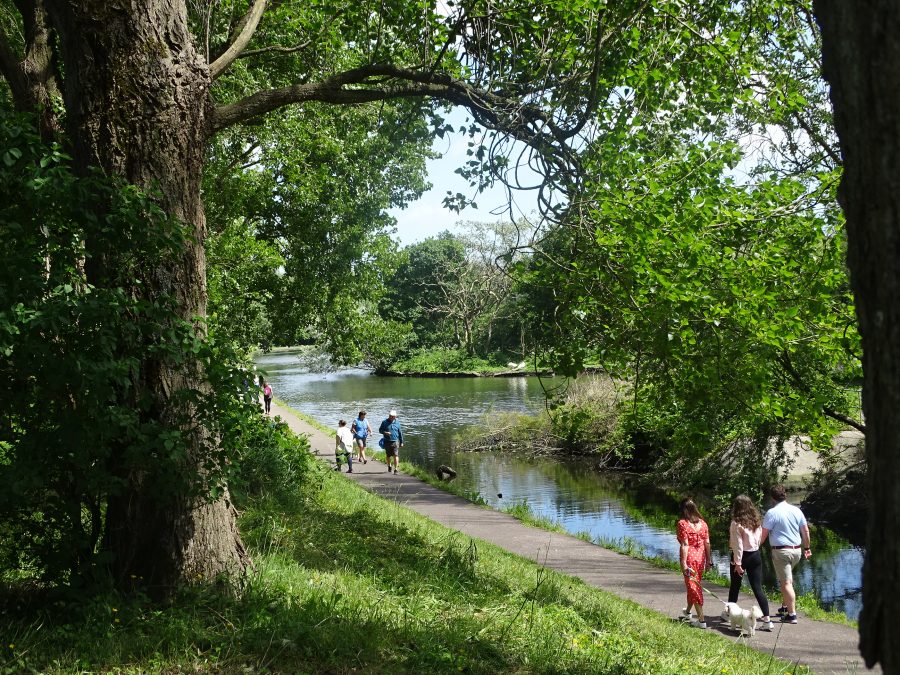
The Atlantic Pond, The Marina, Cork, late May 2020 (picture: Cllr Kieran McCarthy)
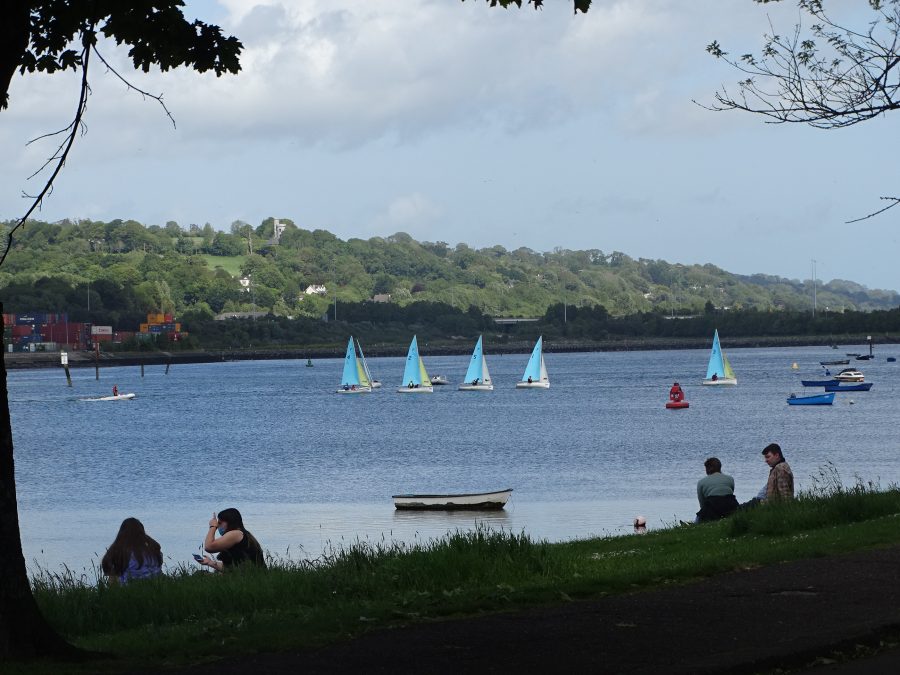
The Marina, Cork, late May 2020 (picture: Cllr Kieran McCarthy)
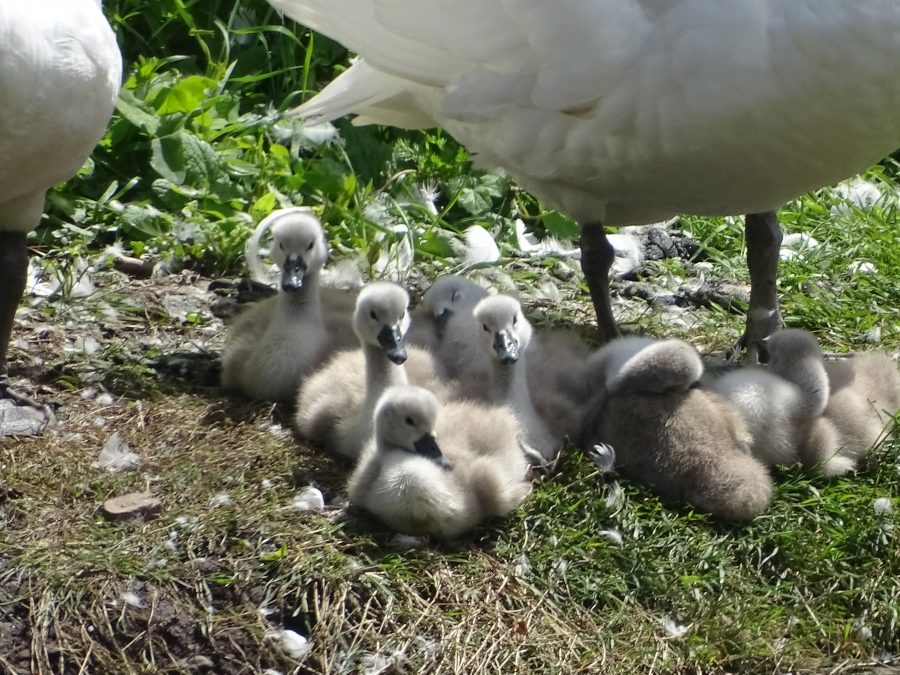
Cygnets, The Atlantic Pond, Marina, Cork, late May 2020 (picture: Cllr Kieran McCarthy)




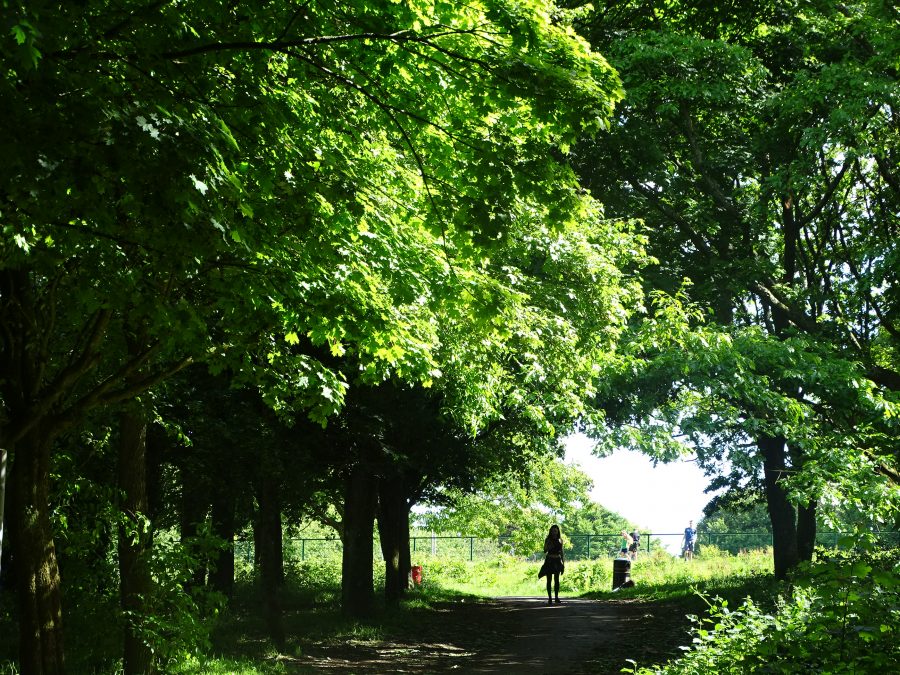
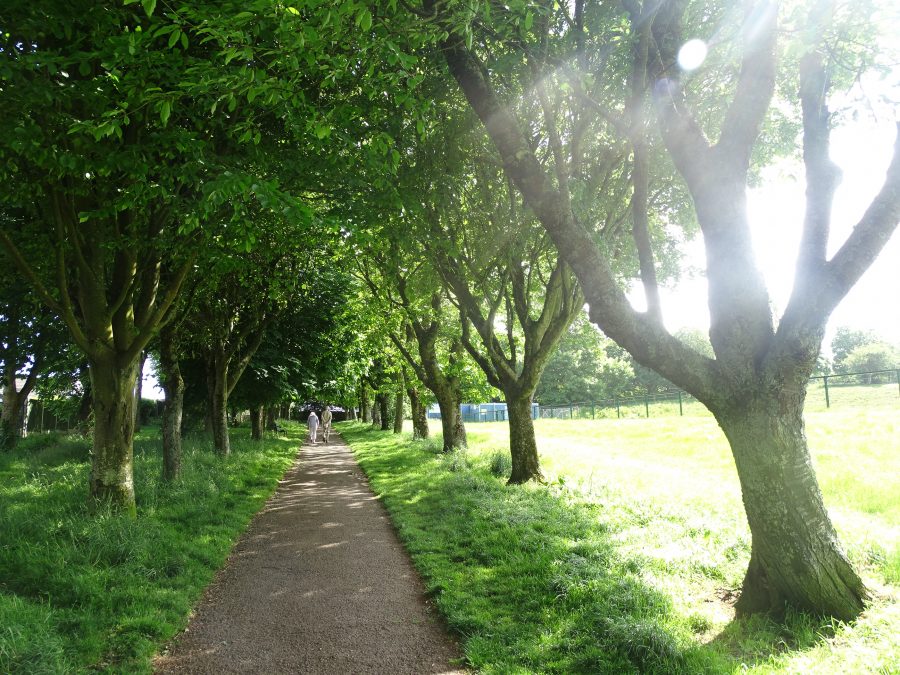
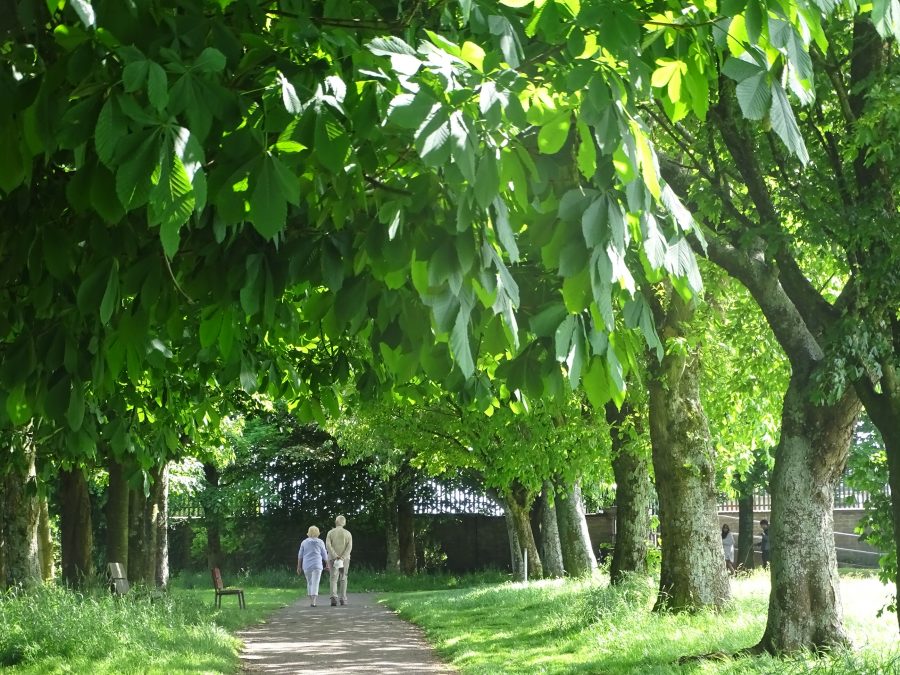
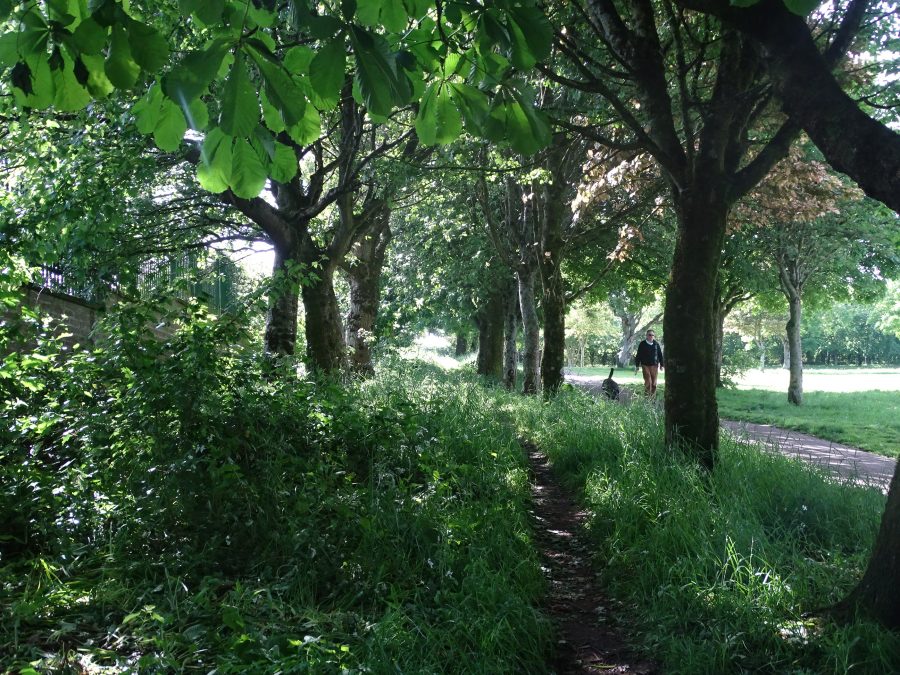
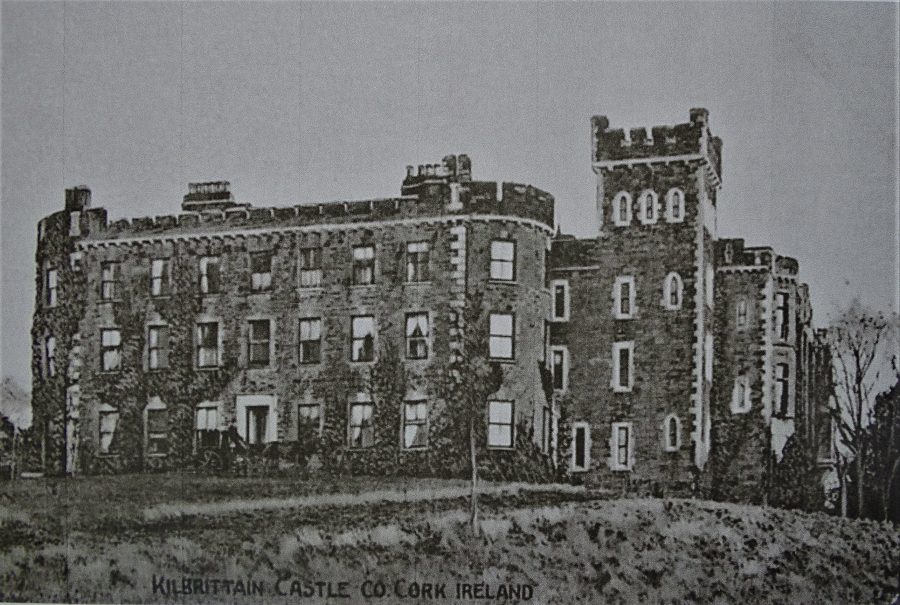
Kieran’s Our City, Our Town Article,
Cork Independent, 28 May 2020
Remembering 1920: Kilbrittain’s Arson Attack
As the weeks of early summer 1920 progressed, tensions escalated and violence ensued between the IRA and British forces. One additional element of force, which appears more and more in witness statements and across the newspapers of 1920, was the use of arson. It was used on both sides of the conflict especially in the destruction of buildings (and an aspect, which culminated in the Burning of Cork in December 1920).
In May 1920, the burning of old landed estate big houses began and intensified as the war of Independence progressed. Historian James Donnelly in a journal article in Éire-Ireland in 2012 records that burnings of such houses were a common occurrence in County Cork but were rare outside of the county. Fifty Big Houses and suburban villas were burned there before the Truce in July 1921. Forty of the fifty structures were burned throughout Cork from April 1921 onwards to the Truce on 11 July 1921.
On early Tuesday morning 25 May 1920 Kilbrittain Castle, a splendid ancient building, seven miles from Bandon and standing on an eminence overlooking a most scenic spot, was at midnight seriously destroyed by arson. IRA volunteers were determined to prevent the occupation of the mansions in question by British military or police forces or sought to punish their owners for allowing or encouraging such use. The IRA’s first burning of a Cork Big House was certain to seize public attention because of the sheer size, prominence, and opulence of the Kilbrittain Castle mansion destroyed. The damage was estimated at least £100,000.
The original Kilbrittain Castle dated from the eleventh century, but the property was extensively re-modelled in the middle ages, and later in the eighteenth and nineteenth centuries by the Stawell family. In 1906 it was the property of Colonel William Stawell and valued at £182. There were 60 rooms in the Castle, which included a ballroom and banqueting hall. The corridors in it were extensive, and in front there was an exceptionally grand lawn and a fine kitchen garden.
From 1913 onwards the castle as residence lay idle. In 1918 the estate was auctioned in Dublin, and the purchasers were based in Cork City Mr. Denis VDoyle of Maryville, Victoria road and Mr Daniel O’Riordan of Clarence Street (now Gerald Griffin Street). They acquired it for a sum of £15,000. Neither of the purchasers, who were well-known Cork citizens, save in the summer, took over the Castle as a residence. The land surrounding the residence comprised over 500 acres of which 200 acres were woodlands and were being harvested – over 40,000 tons of timber. Of this quantity 2,000 tons or thereabouts was cut down and sold. The men, numbering over 20, engaged in this work were accommodated and their families with apartments in the Castle. Some of the felled timber went to Burren pier for shipment to Cardiff and Newport. Other quantities were carted to the nearby railway station at Bandon for transport to Cork, where it was sold. The 300 acres of the estate was good farming land, and this was let to tenants.
On 24 May 1920 the Castle was occupied by the men employed cutting the trees and their families, and it appears they were ordered to leave the Castle by the IRA volunteers and take as much as they could take within ten minutes before the building was to be set on fire.
Denis Lordan, Quarter Master with the Cork No.3 Brigade, 1919-1921, in his witness statement (WS470) held at the Bureau of Military History, outlines that tensions between the local Volunteer battalion and the local Royal Irish Constabulary (RIC) were simmering and ongoing for two years previously and that the May 1920 burning should not be looked at in isolation but had a deep historical context.
Previous to the purchase of the lands by Doyle and Riordan in 1918 a number of families in Kilbrittain village had rented on a yearly basis portions of these lands for tilling and grazing and for many of them it was their sole means of livelihood. When the lands were sold on, the tenants were outbid and felt very much aggrieved by the event. Abortive attempts were made to negotiate peaceful settlements of the dispute and finally a boycott was declared. All those working on the estate in tree felling were to cease work. A certain number of men persisted in working and one day a steam tractor used for hauling timber to Bandon was fired on and one of the workers was wounded. After the shooting affair Doyle and Riordan applied to the British authorities for police protection.
Brigade Staff Officer and member of Cork No.3 Brigade, Michael Crowley in his witness statement, now held in the Bureau of Military History (no. WS 1603), takes up the story that the RIC gave Doyle and Riordan police protection and occupied the castle. The police force sent out day and night patrols into the neighbouring countryside. But observation by Volunteers revealed a set pattern for patrols and they ambushed a patrol of eight men and officer disarming them at Rathclarin, Kilbrittain. A sergeant, however, had time to draw his bayonet and inflicted a severe head wound on Lieutenant Michael O’Neill of Maryboro, Kilbrittain. The nine RIC men though were released.
Further small ambushes ensued across 1919 and 1920. Michael Crowley records that by April and May 1920, his battalion were continually endeavouring to locate RIC patrols, which usually patrolled the countryside for some miles around their barracks. Despite being on the RIC’s most wanted list, they continued to engage and disarm RIC members. However, by August 1920 in the overall picture of County Cork as many as eight infantry battalions (20 percent of the total) and one cavalry regiment were stationed in the county or city (of Cork alone). The historical tensions had been replaced with all-out war.
Captions:
1050a. Kilbrittain House, c.1910 (source: Cork City Library).
1050b. Section of Ordnance Survey of Kilbrittain Castle estate, c.1910 (picture: Cork City Library)
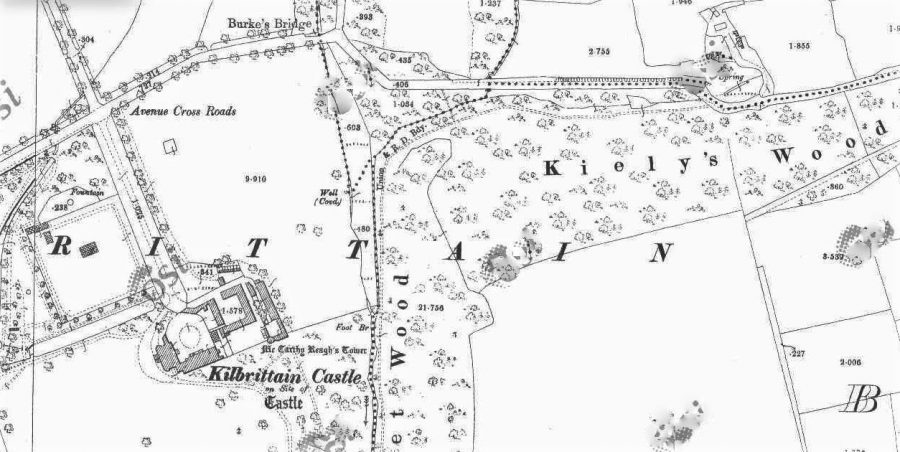
A €250 million Restart Fund has been created nationally by the Minister for Business, Enterprise, and Innovation to help micro and small enterprises with the costs of reopening during Covid-19.
Companies can apply to their local authority for a grant of an amount equivalent to no more than their 2019 rates bill. There will be a cap of €10,000.
The grant can be used to pay ongoing fixed costs, for replenishing stock and for measures needed to ensure employee and customer safety.
To receive the grant from Cork City Council a business must:
You can make an online application for the Cork city grant, https://bit.ly/3e5UpCH
Frequently Asked Questions (FAQ) on the grant scheme are also available on this page of the www.corkcity.ie website.
For any other queries, please contact Cork City Council’s Customer Services Unit at 353 21 4924000.
Over the past few weeks, large numbers of SMEs have contacted Cork City’s Local Enterprise Office, which is located at Cork City Hall and works in conjunction with Cork City Council. The LEO has been a central component in the Government’s and Council’s response to the needs of small business in dealing with the repercussions of Covid-19.
At last week’s online City Council Covid-19 briefing Independent Cllr Kieran McCarthy has praised the efforts of the LEO office and called for even more supports to be put in place to meet the large interest in the Trading Online Voucher Scheme and mentoring programmes. Cllr McCarthy noted: “As the economy moves into restart phase, the local enterprise office is continuing to adapt its training, advice and guidance to respond to the needs of business. The LEO continues to manage its existing and very positive business support programmes to mass interest”.
Under the Government’s National Digital Strategy, the expanded Trading Online Voucher Scheme helps small businesses with up to 10 employees to trade more online, boost sales and reach new markets. There is up to €2,500 available through the Local Enterprise Offices with co-funding of 10% from the business. Training and further business supports are also provided by Local Enterprise Offices, and businesses that have already received a Trading Online Voucher can now apply for a second voucher, where upgrades are required. Funding can be used towards adding payment facilities or booking systems to your website or developing new apps for your customers. The voucher can also be used towards subscriptions to low cost online retail platform solutions, to help companies quickly establish a retailing presence online.
Under the Local Enterprise Office Mentor Programme, clients work with an experienced mentor to identify solutions to areas of exposure within their business. With advice and guidance from their mentor, clients develop strategies that are more robust, which address issues and maximise potential opportunities when the COVID-19 crisis comes to an end. Mentoring services are now free of charge. Weekly free business advice clinics are now being held by telephone or through video conferencing e.g. Skype/Zoom.
The COVID-19 Business Loan from Microfinance Ireland (MFI), in partnership with Local Enterprise Offices, is a Government-funded initiative to support small businesses through the current period of uncertainty. It is designed for micro-enterprises that are a) having difficulty accessing Bank finance and b) impacted, or may be impacted negatively, by COVID-19 resulting in a reduction of 15% or more in turnover or profit.
The Business Continuity Voucher, available through Local Enterprise Offices, is designed for businesses across every sector that employ up to 50 people. The voucher is worth up to €2,500 in third party consultancy costs and can be used by companies and sole traders to develop short-term and long-term strategies to respond to the Covid-19 pandemic. The goal is to help companies make informed decisions about what immediate measures and remedial actions should be taken, to protect staff and sales. Further information on the above can be viewed at https://www.localenterprise.ie/CorkCity/
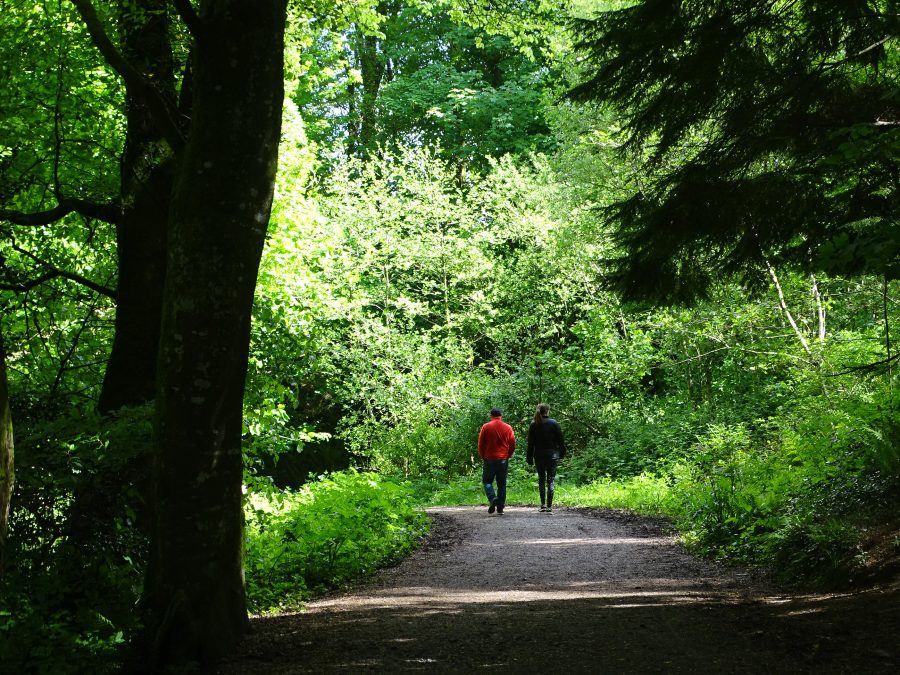
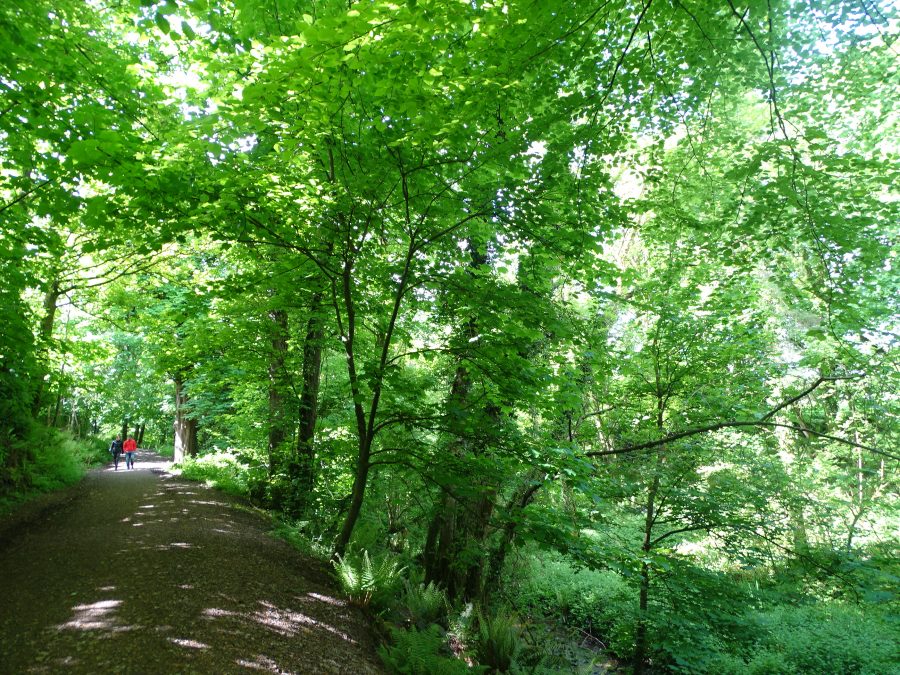


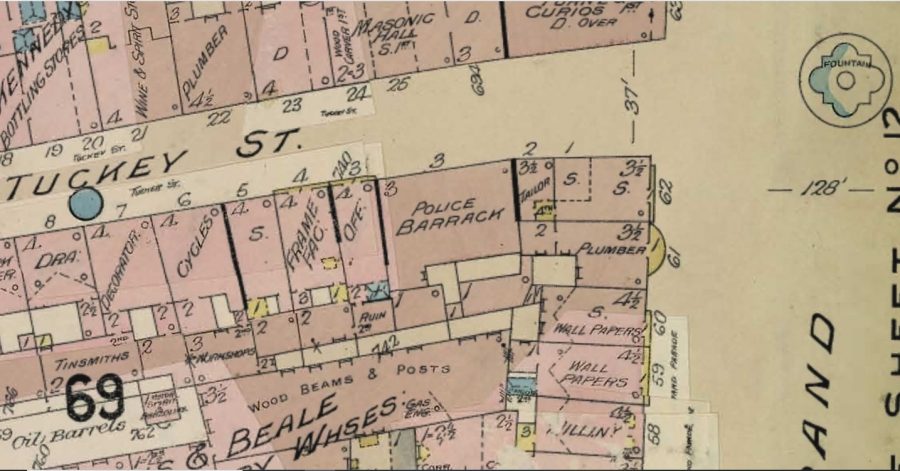
Kieran’s Our City, Our Town Article,
Cork Independent, 21 May 2020
Remembering 1920: The Gathering of Intelligence
The witness statements of the Bureau of Military History offer much insight into the Irish War of Independence. There is much to gleam from the Cork context on IRA activity and the gathering of intelligence by Cork Brigade no.1 across April and May 1920.
Michael Murphy (Commandant, 2nd Battalion Cork No. 1 Brigade, O/C, Cork No. 1 Brigade Active Service Unit/ witness statement 1547) relates that early in the month of April 1920, an order was received from General Head Quarters Dublin, to the effect that all income tax offices should be burned at the same time on a fixed date. This action was to be taken all over the country. The aim was to destroy all records and thereby cause a considerable financial loss to the British Exchequer, as well as completely disrupting the collection administration.
There were two income tax offices in Cork City one at the South Mall, which was in the 1st Battalion area, and one at 33 South Terrace the 2nd Battalion. Michael relates that for days before the operation took place, he placed men on watch near the South Terrace offices to note the number of staff employed, the times of arrival and departure of the staff, and the number and location of the rooms in the building occupied by the income tax authorities. Petrol was commandeered some days prior to the burning.
Shortly before 8pm on 5 April 1920, the petrol was taken in horse carts to the vicinity of the South Terrace offices and Michael with about twelve other men, entered the building. The offices occupied the first and second floors over which were offices used by the British Pensions Board. The first job of Michael’s unit was to get all the record books out on the floors, loosen the pages and spread them out. There was no staff in the building at the time. The building was then set alight and soon gutted. About 50 to 60 men of the 2nd Battalion were engaged on the job that night filling petrol tins and doing armed guard (carrying revolvers) in the area.
Michael V O’Donoghue (Engineer Officer, 2nd Battalion, Cork No.1/ witness statement 1741) notes that during the spring and summer of 1920 the active Volunteers of A-Company did quite a lot of scouting and spotting. They usually performed their intelligence chores in pairs. Michael details in his witness statement: “A regular beat of ours was the Western Road between the Muskerry Station and the Gaol Cross. Two hours was the maximum duty time, but usually the scouting pair were relieved at more frequent intervals. Our main objectives were to note accurately all enemy movements and activities and details of time, direction, number, type, were to be precise…As a result of this intensive work, the regular movements of all enemy forces along the Western Road in daytime was well known to IRA intelligence. Even the off-duty activities of police and soldiers were also quietly noted”.
Another beat of A-Company was the Grand Parade and the South Main Street, which ran parallel to it. On Tuckey Street the Royal Irish Constabulary (RIC) had a large and strong barracks with a garrison of about thirty. It was A-Company’s job to note as minutely as possible all the activities of police during the day and night. Firearms for A-Company were held in a high room of the college tower of UCC, which continued as a store and dump for arms across 1920 and 1921.
Leo Buckley (Staff Officer, Intelligence, Cork No. 1 Brigade/ witness statement 1714) was a skilled telegraphist in the GPO, Cork. The Cork No.1 Brigade was anxious to obtain copies of all coded telegrams passing through Cork Post Office to and from British Army and RIC sources. The key to the codes used was obtained and accordingly from 1920 onwards, Leo supplied the Brigade with copies of all coded telegrams passing through the Post Office. He made a daily delivery of coded telegrams to Brigade Staff. When they were not available Leo left the copies with Nora Wallace, who then conducted a newsagent’s shop in Brunswick Street (now St Augustine Street). If a priority telegram came through, it was copied and handed over immediately to the Brigade Staff. The British Authorities made frequent changes in the key to the codes, but any changes made were notified in one of the coded telegrams.
Seán Healy, Captain (A-Company, 1st Battalion, Cork I. Brigade/ witness statement 1479) in his witness statement notes that a very strict censorship of letters and parcels was imposed by the British authorities during the years 1920 and 1921 with the result that none could be sent by post. Therefore, other means of communication had to be found. Railwaymen came to the rescue. Special agents were appointed at all the big railway stations who would handle these dispatches. Men employed in Booking Office, Parcels Office and Cloak Room could be trusted.
Robert C Ahern (Intelligence Officer, Cork No. I Brigade/ witness statement 1676) recalls he organised the arrangements for transmitting weekly reports by D-Company men engaged in various occupations. Certain men employed in public houses, hotels, railways, on the docks and in business houses, reported anything, no matter how trivial it might appear, which related to enemy activity or personnel. The intelligence officers of the nine companies comprising the 2nd Battalion met each week and considered these reports and sent them upstream. One result of the extensive system of intelligence developed in the 2nd Battalion was the numerous and successful raids carried out by men of the battalion on the premises of the Cork-Bandon and Cork-Macroom railway in Cork City. To these stations were consigned an enormous quantity of military stores of all kinds – provisions, clothing, boots, bicycles, and general canteen supplies for the large military barracks in Cork and the south west generally. The military material was taken to a dump prepared in the grounds of the Cork Agricultural Society’s showgrounds at The Marina.
Captions:
1049a. Section of Goad’s insurance plan for Tuckey Street, 1915, which shows the RIC Barracks (source: Cork City Library)
1049b. Former site of Tuckey Street RIC Barracks, now the present day site of the St Vincent de Paul offices (picture: Kieran McCarthy)
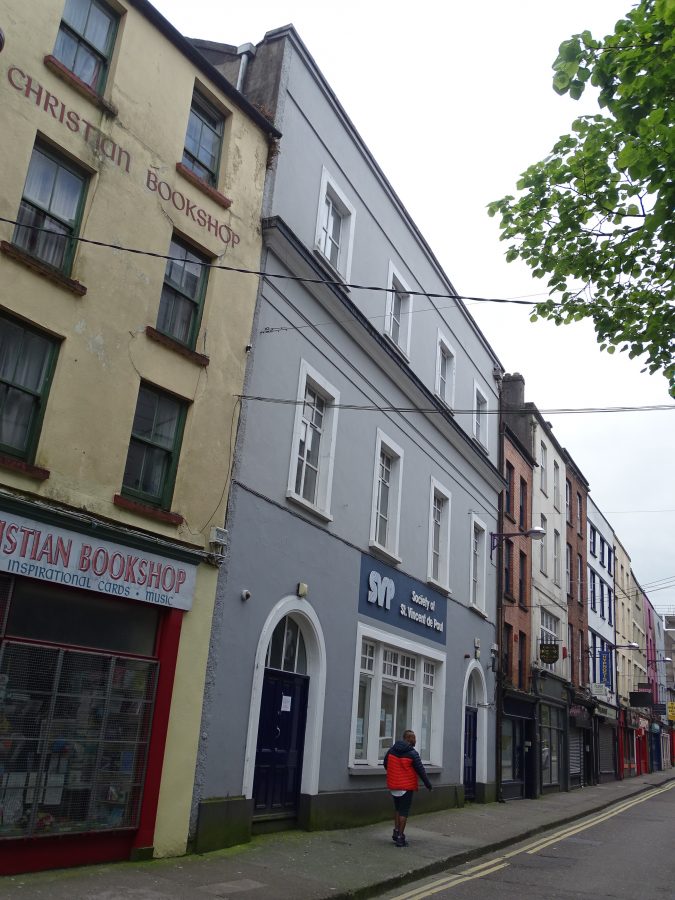
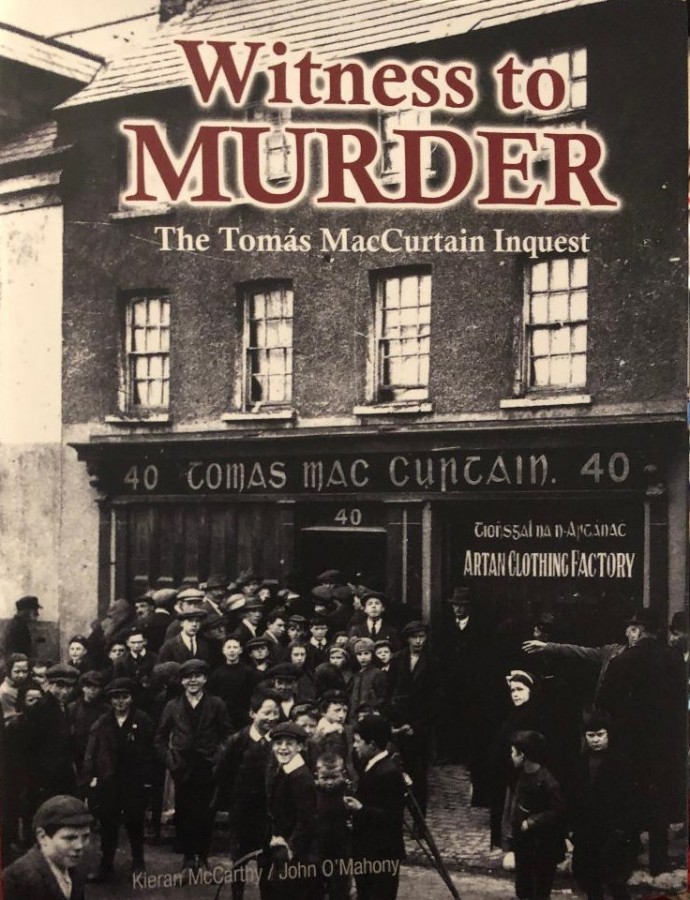
Independent Cllr Kieran McCarthy is seeking information from families with connections to the jury on Tomás MacCurtain’s Inquest, who may still live in the Douglas area or in the south east of the city. One hundred years ago, the Tomás MacCurtain inquest was the most significant inquiry of its kind ever held in Cork City. The verdict, which was given on 17 April 1920, was the most startling ever pronounced by a coroner’s jury in the British Empire. Cllr McCarthy noted: “Apart from the verdict there are many voices in the 70,000 word transcript of the inquest, which I recently compiled with news editor John O’Mahony and the Irish Examiner to create the publication Witness to Murder. The voices of the 90 interviewees are a very important part of the inquest but so also was the work of the chair Coroner James McCabe and his jury”.
Cllr McCarthy continued: “Whilst researching the proceedings of the 14 sessions of the inquest you can read how Coroner James McCabe tried to remain calm remain and thorough, in what was a raw and emotional time inside the inquest’s location at the old City Hall and outside in a city, which was unstable with tit for tat attacks by the IRA and the growing swathes of Black and Tan auxiliaries in the city. James McCabe handled all interviews of witnesses, solicitors and police officials alike with calmness, dignity and courtesy. He was always helpful and courteous to the journalists present too and was held in high esteem amongst its members”.
At the conclusion of the Inquest of Tomás MacCurtain on 17 April 1920, Chairman Coroner James McCabe thanked the jury for the great care and attention they had given the various witness interviews. The 14-man jury comprised: William J Barry (foreman), Daniel Barrett, Richard Barrett, Michael J Grace, David Hennessy, Harry Loreton, Patrick McGrath, Melville McWilliams, Florence O’Donoghue, Peter O’Donovan, Jeremiah O’Callaghan, Thomas O’Shaughnessy, Tadgh O’Sullivan and Pádraig O’Sullivan.
With the passing of time, the memory of several of the latter members has disappeared. Through searching through obituaries, I have constructed some biographical information on the jury members. I have some leads that some of whom I am researching once lived in the south east of the city in the Douglas area or in the south east of the city. There may be families who still remember them. In particular I am some seeking information on the following jury members whose memory has been forgotten – the foremanWilliam J Barry, Daniel Barrett , Michael J Grace, David Hennessy, Harry Loreton, Melville McWilliams, Peter O’Donovan, Jeremiah O’Callaghan, and Thomas O’Shaughnessy. I can be contacted at 087 655 33 89 or at info@kieranmccarthy.ie. Witness to Murder, The Inquest of Tomás MacCurtain (2020, Irish Examiner) is also available to purchase at www.irishexaminer.ie.
A European competitive open funding call is being targeted at Irish companies who undertake innovative workplace initiatives that improve working conditions or the working environment – leading to potentially better business competitiveness. Five companies from across the country can receive € 7,500 in Start at Best funding to support a workplace innovation initiative. No match funding is required.
Start at Best, a Horizon 2020 project, is taking applications for initiatives which support and/or improve working conditions and/or the workplace environment. Any company (subject to T&C) with a new workplace innovation – commencing any time after March 2nd up to August 31st, 2020 – is eligible to apply. Initiatives which meet key criteria can apply for funding and will be judged on pre-set criteria by an independent judging panel. Reacting to the COVID-19 crisis, the deadline for submission has been extended to June 3rd 2020 to give more time for applicants to prepare proposals.
Workplace innovation (WPI) refers to practices that enable employees to participate in organisational change to improve the quality of their working life and organisational performance. Innovation Programme Manager at Cork City Council, Siobhan Finn said: “Workplace innovation has emerged as a key driver for business competitiveness. During the best of economic times, workplace innovation has become an important consideration; in these Covid-19 times it has the potential to be a key tool for business recovery. SMEs and micro-business in Ireland are facing uncertain and challenging futures; any support which will help reorient business practices to improve productivity and thus competitiveness should be examined”.
“Research has shown that while there is significant variation in the types of WPI practices in companies, the process of why and how these practices are implemented shows considerable similarity. While the reasons for introducing WPI are mainly related to efficiency, competitiveness and innovation, another positive result seems to be strengthening the working environment of employees and employee representatives. WPI outcomes often lead to enhanced economic performance and a better quality of working life for all,” she added. Start At Best is a Horizon 2020 project which promotes SME competitiveness through the funding of workplace innovation. Cork City Council is one of four consortium partners for this EU Project. -ENDS-
– For further information –
Siobhán Finn, Innovation Programme Manager, Cork City Council | E: siobhan.finn@corkcity.ie – Notes to the Editor –
Cork City Council is one of four consortium partners under Start at Best – a Horizon 2020 project which promotes SME competitiveness through the funding of workplace innovation practices* (WPI) among the EU SME community. Start at Best is supported under the Horizon 2020: Programme 2018-2020 for a better innovation support to SMEs and the action Workplace innovation uptake by SMEs (INNOSUP-04-2019). This action is aimed at regional and national innovation support agencies that design, implement and/or assist innovation support programmes for SMEs and micro-firms.
– Full details of the Start at Best Project – https://startatbest.eu
Independent Cllr Kieran McCarthy has praised the work of frontline staff in Cork and held the City’s Community Response Forum, which covers the Douglas and south east area of Cork City as a best practice example in a pool of many others, which are supporting the rallying against the Coronavirus across the EU.
Cllr McCarthy raised such sentiments on his regular online European Committee of the Regions meetings. Cllr McCarthy is the President or chair of the European Alliance grouping within the European Committee of the Regions (CoR). The CoR is a 329 person formal EU assembly of councillors, Mayor and Regional Presidents from over 270 regions in the EU.
On recent video conference calls of the Conference of Presidents meetings, where presidents or chairs of other political groupings sit, Cllr McCarthy has strongly lobbied that local and regional authorities such as Cork City Council, who are on the forefront of the fight against the Coronavirus pandemic must be supported by EU Funds. He also raised the plight of SMEs in smaller European cities such as Cork and that any emergency EU funding released needs to get to the citizen on the actual ground and not be held up at central government level.
Cllr McCarthy also lobbied for the creation of an exchange platform to help local and regional leaders share their needs and solutions and to enhance mutual support between local communities across Europe. The platform, which has been rolled out over the past few week, enables CoR members to give their feedback on the EU actions already put in place, allowing a policy reality check from the ground. The CoR provides regular and practical information about EU measures, with particular focus on the financing opportunities.
Cllr McCarthy strongly noted that it was vital that Regions and Cities across the EU to work together to ensure that this virus would be defeated and that regions and cities had to have the means at their disposal via EU and National Funding. He added it was hugely important for citizens to heed the advice of the relevant authorities regarding ‘staying at home’ and ‘social distancing’.
Cllr McCarthy has also emphasised that the outbreak and rapid spread of COVID-19 is putting public sector organisations through great challenges and great stress with local governments, public administrations, local health services particularly at the forefront of the crisis; “This is a virus with a serious impact on public health, the economy and social and political issues. Different local authorities and different regions within the same country are in different scenarios but knowledge of different interventions can help those on the front line with more information and how to drive the virus back”. Those following developments in other European countries may be interested in the European committee of the Regions knowledge exchange platform, which is available to view at www. cor.europa.eu.